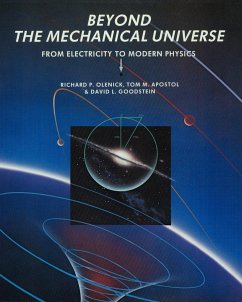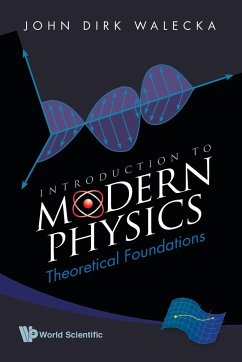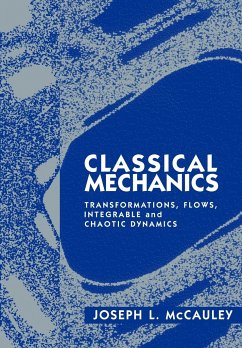
Nearly Periodic Matrix Operators For Physics
Versandkostenfrei!
Versandfertig in 1-2 Wochen
16,99 €
inkl. MwSt.

PAYBACK Punkte
8 °P sammeln!
The first seven chapters of the book build a case of the validity of certain matrix operators in theoretical physics. A simple, generalized Lorentz transformation, that yields correct results in every case and leads to a generalized relativistic velocity vector addition rule, was discovered. The addition rule leads, in its turn, to an electron spin model with the correct gyromagnetic ratio. A differential matrix, D*1, when multiplied into the electromagnetic vector potential, yields the electromagnetic fields, iE +B . The complex conjugate, D1, operating on these same fields gives the complete...
The first seven chapters of the book build a case of the validity of certain matrix operators in theoretical physics. A simple, generalized Lorentz transformation, that yields correct results in every case and leads to a generalized relativistic velocity vector addition rule, was discovered. The addition rule leads, in its turn, to an electron spin model with the correct gyromagnetic ratio. A differential matrix, D*1, when multiplied into the electromagnetic vector potential, yields the electromagnetic fields, iE +B . The complex conjugate, D1, operating on these same fields gives the complete set of Maxwell's equations in essentially one step. Operation again with D*1 on the Maxwell equations or on the charge-current density 4-vector yields the charge-current density conservation law in 4 dimensional form, and so on. Finally, the tour de force of electromagnetism is completed by the surprising result that arbitrary motion of a charge automatically produces E-M fields with zero time components. Operation of the D*1 matrix on the energy-momentum vector yields the Schroedinger operators for energy and momentum. The dot product of the Lorentz transformed position vector of a particle with a suitable propagation vector yields an argument for a wavefunction that can be localized or not localized to any reasonable degree and has both explicit group and phase velocities, a purely oscillatory part, and a spin part. Other results are as follows: Dirac matrices are found to be nearly periodic matrices also. Derivations of two of Hamilton's canonical equations are obtained by operation with a D matrix, constructed from derivatives with respect to the generalized coordinates or the canonical momenta, on the energy-momentum vector. Finally, a surprising result, which is not yet completely substantiated and bears on the effects of gravitational forces, appears. It may be that space curvature is not necessary for gravitation.












